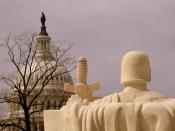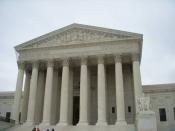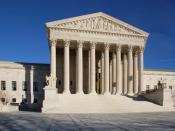The constitution of the United States is considered to be a living and breathing document. The Supreme Court rules on cases where there is an issue that involves someone's rights under that constitution. Prior to 1937 and the NLRB v. Jones and Laughlin Steel Corporation case, the court was always heavily favoring business over the worker. There were different cases which came to the Supreme Court and these case decisions have been considered as important as they challenged the earlier court decisions and it was New Deal programs like the NIRA and NLRB which fought against the precedent and got the court to start giving workers the same rights as the employers.
During the Lochner Era (1905-1937) there were significant changes in the American constitutional law. The decisions of the Lochner Era were influenced by the economic developments which challenged the earlier legal doctrines, such as Lochner v. New York, and led to major changes in the American constitutional law.
The Lochner Era began with the decision of the Supreme Court in the Lochner v. NY case that nullified the legislation and its provisions such as maximum working hours pertaining to the bakery workers. The Bakers Act was introduced in order to protect the interest of the working class people who were forced to work for long hours. However, when Lochner, a baker, approached the court challenging this act, he was supported by the court decision which led to the beginning of the famous Lochner Era. Lochner was also supported by the baker union leaders such as Henry Weismann. However, this particular decision resulted in the debate pertaining to "...proper role of judiciary in the review of legislation" and "the validity and scope of substantive due process doctrine." The Supreme Court took this decision based on the argument that...


